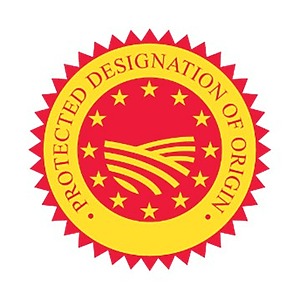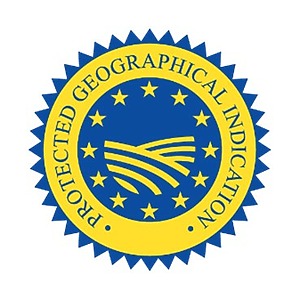Article | 29 May 2024
Recent developments and an update on Geographical Indications (GIs)

This brief article intends to inform about recent developments in the legal framework, but also to provide an introduction to the most relevant types of GIs and their respective application, with a few illustrative examples from a Swedish perspective on what has been registered.[1]
As with most other things, there are trends in intellectual property rights. Despite the fact that geographical indications of origin (GIs) have been hugely popular, been used and had protection sought for them in many countries, they have not had any major impact in the Nordics or indeed on the Swedish market. Sweden has no tradition of protecting geographical indications or designations of origin. Instead, we have protected trademarks. But there are advantages to protected designations, for example:
– The protection is indefinite.
– Many people are willing to pay more for a product with a protected designation.
GIs are a form of intellectual property right that identifies a product as originating from a specific place, where a given quality, reputation or other characteristic of the product is essentially attributable to its geographical origin. In Sweden, as in other parts of the European Union, the protection of geographical indications is a matter of both national and EU law. The protection is intended to ensure that only products genuinely originating in/from a specific region are allowed to be marketed under the relevant GI.
Indeed, the awareness of and interest in GIs in Sweden also seem to be on the rise. Applications for GI registrations have multiplied in recent years. At the same time, the strength and scope of GIs has only grown in the EU and the very recent new EU regulation commented on further below is an example of such efforts.
The legal framework and challenges
In Sweden, the legal framework for the protection of GIs is primarily governed by EU regulations. The EU has established a robust system for the protection of GIs, perhaps the most important ones being the Protected Designation of Origin (PDO), the Protected Geographical Indication (PGI), and the Traditional Speciality Guaranteed (TSG). These three GIs and their respective “seals”, or certification marks, are further described below. GI designations are generally intended to help consumers trust and distinguish the quality and authenticity of the products labelled in this way.
There are more than 1,000 protected GIs registered in the EU database. Most of the products originate in the EU, but some are from countries outside the EU.
However, the protection of GIs in Sweden and the EU is not without its challenges. One of the main issues is the global recognition and enforcement of these rights, or rather the lack of the same. While GIs are well-protected within the EU, it can be more difficult to enforce these rights in countries outside of the EU that may not have equivalent legal protections. The EU is working on establishing bilateral agreements for mutual recognition and thus means of enforcement in non-EU countries where a specific protection agreement has been signed. Additionally, there is the ongoing challenge of educating consumers about the meaning and significance of GIs, which is important in terms of the effectiveness of the system.
The competent national authorities in each EU country must take the necessary measures to protect the registered names within their territory. They are also required to prevent and halt the unlawful production or marketing of products using such a name. The protection awarded to a registered GI is strong, even if it is collective. It applies to direct and indirect commercial use and covers misuse as well as imitation or allusion, untrue or misleading information about origin, provenance, nature or essential characteristics. In addition, it also provides the possibility of customs seizure and an absolute ban on the registration of similar trademarks (Ch. 2 § 7 of the Swedish Trademark Act). Under Ch. 3 § 1 of the Swedish Trademark Act, misleading use can constitute a ground for cancellation. Case law of the EU courts includes cases referable to products such as cheeses, hams, beer and Champagne.
THE THREE MAIN TYPES OF GI:s

Protected Designation of Origin (PDO)
- PDO covers agricultural products and foodstuffs that are produced, processed and prepared in a given geographical area using recognized know-how.
- Examples include ‘Kalix löjrom’, the roe from vendace fish caught in the Gulf of Bothnia, which is a PDO.
- Every part of the production, processing and preparation process must take place in the specific region. For wines, this means that the grapes have to come exclusively from the geographical area where the wine is made.
Protected Geographical Indication (PGI)

- PGI emphasizes the relationship between the specific geographic region and the name of the product, where a particular quality, reputation or other characteristic is essentially attributable to its geographical origin.
- For instance, ‘Svensk Vodka’ or Swedish Vodka can be classified under PGI, highlighting the quality and tradition of Swedish vodka production.
- For most products, at least one of the stages of production, processing or preparation takes place in the region. In the case of wine, this means that at least 85% of the grapes used have to come exclusively from the geographical area where the wine is actually made.
- The differences between PDO and PGI are linked primarily to how much of the product’s raw materials must come from the area, or how much of the production process has to take place within the specific region.
Traditional Speciality Guaranteed (TSG)

- TSG highlights traditional character, such as the way the product is made or its composition, without being linked to a specific geographical area. Registration of a product’s name as a TSG protects it against falsification and misuse.
- ‘Falukorv’, a traditional Swedish sausage, could potentially be protected under TSG.
Recent developments
Very recently, on 23 April 2024, Regulation (EU) 2024/1143 of the European Parliament and of the Council amending the regime on geographical indications (GIs) in the European Union was published in the EU Official Journal. (Link: Regulation (EU) 2024/1143)
The new regulation repeals and replaces Regulation (EU) 1151/2012 on the quality of agricultural products and foodstuffs, which regulated geographical indications (protected designation of origin (PDO), protected geographical indication (PGI)) and traditional specialities guaranteed (TSG), as well as the use of certain optional quality terms.
The new regulation also partially amends the regimes of the (EU) regulations on quality wine (Regulation 1308/2013) and spirit drinks (Regulation 2019/1753).
The publication of the new regulation importantly updates and extends the scope of protection of “quality marks” that was recently established by Regulation (EU) 2023/2411 of the European Parliament and of the Council of 18 October on the protection of geographical indications of artisanal products, which inter alia introduced for the first time a GI protection scheme for these products at EU level.
What, then, are the key features of the new Regulation 2024/1143?
Notable among the new features of the new regulation are sustainability aspects – environmental, social and economic. Although based on a voluntary system, the introduction of sustainability aspects must be said to be in line with current trends not only in IP law but also in other areas of commercial legislation on production and trade.
The further introduction of improved protection and explicit legal protection for GIs in relation to domain names and uses on the Internet is a long-sought and welcome addition. Previous criticism about the lack of protection for GIs in this area, where comparisons have often been made to the protection awarded trademarks inter alia in dispute resolution over domain names, has obviously been heeded.
The new regulation also regulates the conditions under which a GI designation may be used commercially when included or used in product labelling. This is a welcome clarification and the previous rather disparate use has been criticised from the perspective of consumers not being able to understand whether the product as such, or something else, benefited from the protection of the GI used.
Notable among other news is an obligation to identify the producer on the labelling and the role of producer groups as GI management bodies.
The new regulation entered into force and is applicable as from 13 May 2024.[2]
[1] A personal reflection from the author is, however, that most of the GIs protected in/for Sweden seem driven more from a local heritage and pride in the relevant products, as many of them are seemingly true niche-products without proven commercial significance.
[2] Article 10(4) and (5) (on the national objection procedure of the EU Member States), Article 39, paragraph 1 (on the establishment by Member States of the list of operators carrying out activities subject to obligations laid down in GI specifications), and Article 45 (on certification of compliance with the specification), will apply from 1 January 2025.


